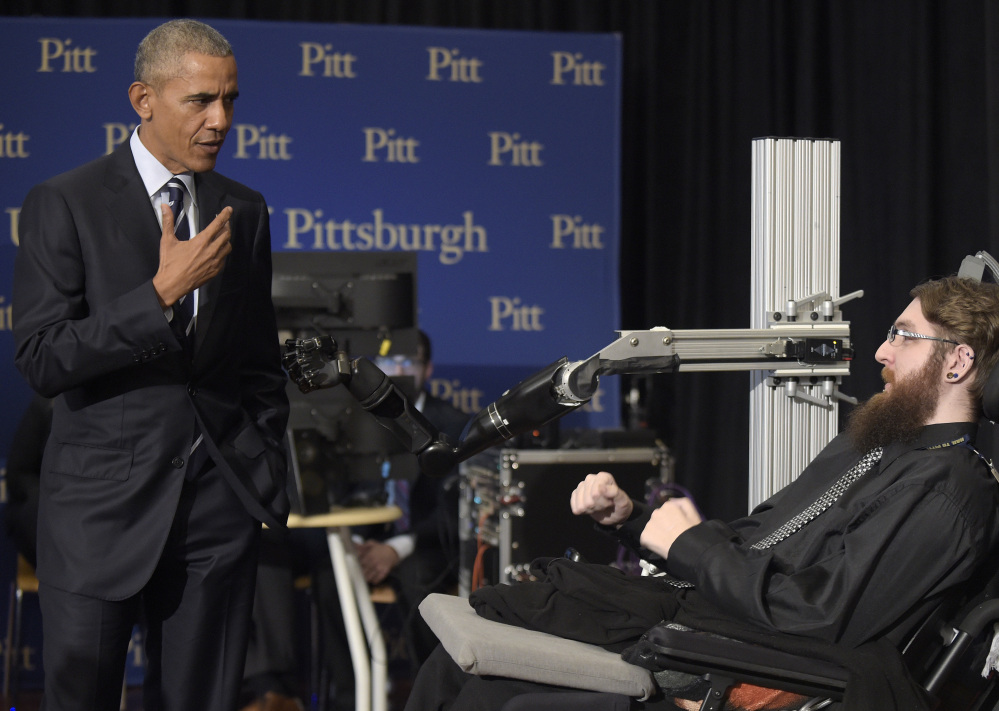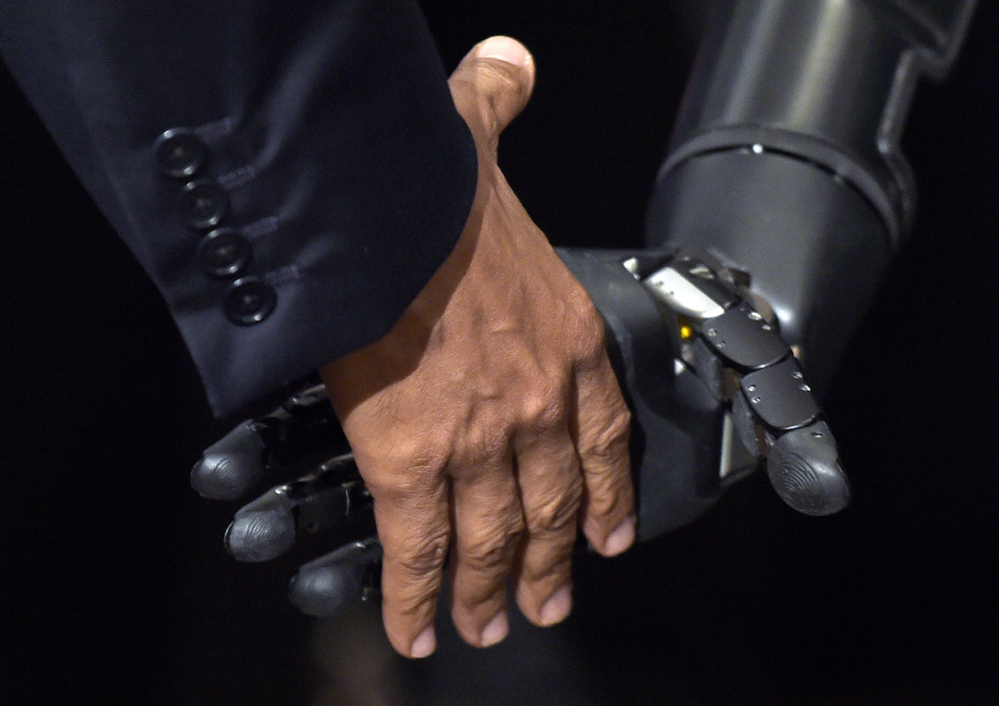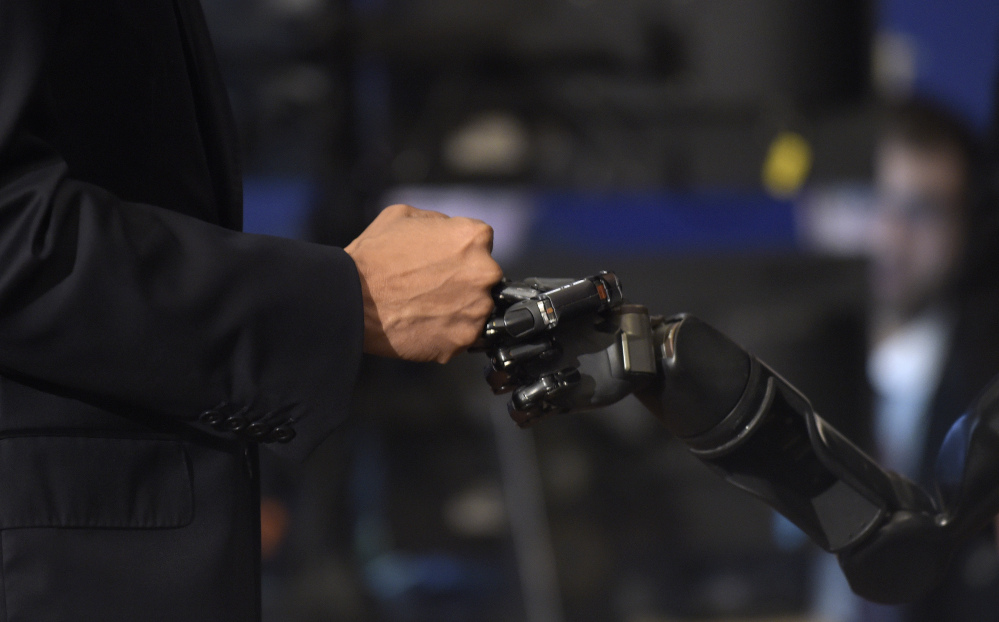WASHINGTON — A paralyzed man shared a handshake with President Obama on Thursday by using a mind-controlled robotic arm that, in a first for medical research, is helping to restore his sense of touch.
Obama fist-bumped Nathan Copeland’s robotic hand, and tiny chips implanted in Copeland’s brain let him use his thoughts to move the Star Trek-looking metal arm attached to his wheelchair – and also let him feel subtle pressure in his own fingers when the artificial ones were touched.
He had “pretty impressive precision,” Obama said. “When I’m moving the hand, it is also sending signals to Nathan so he is feeling me touching or moving his arm.”
The president congratulated the University of Pittsburgh researchers who are developing the technology, saying, “what a story.”
The research is part of a quest to make artificial limbs that can feel. On Thursday, the Pittsburgh team reported important early findings: When they blindfolded Copeland, he could correctly identify which robotic finger they touched 84 percent of the time.
“The majority of them, it felt like a pressure or a tingling” in his own corresponding finger, said Copeland, 30, of Dunbar, Pennsylvania, who was left paralyzed after a car accident. When a researcher touched two fingers at the same time, “I just laughed and I said, ‘Are you trying to be tricky or something?”
Preparing to show the president how the cutting-edge research worked, Copeland said he was “circling between excited and nervous every half-hour.”
Harnessing brain waves to power prosthetics is a hot field, with a goal of giving the disabled more independence and improving artificial limbs for amputees as well. Headlines in recent years have reported experiments that let paralyzed people move a robotic arm to touch a loved one or take a drink simply by imagining the motion. Their thoughts activate brain implants that relay electrical signals needed to command movement. The signals are transmitted through a computer to the robotic limb.
What’s new is recreating sensation using this brain-controlled technology. After all, proper motion depends on more than muscle movement. Reach for something and that sense of touch helps you naturally grasp with just enough force to hang on while not either dropping something or crushing it.
“It’s not only that emotional connection we get,” said Robert Gaunt, a Pittsburgh assistant professor of rehabilitation who led the new study. “People have an incredibly difficult time interacting with objects, picking objects up, manipulating them, doing fairly basic things with the hand if they don’t have a very basic sense of touch.”
Step one is placing sensors in prosthetics. The next hurdle is how to allow feedback to and from those sensors. For amputees, some scientists are attempting to wire nerves left in the remaining part of the person’s natural limb directly to the robotic arm.
That’s not possible if a spinal cord injury has interrupted the messages that normally flash between the hand and the brain. But previous monkey research had suggested brain implants could bridge that gap. So surgeons at the University of Pittsburgh Medical Center implanted electrodes in the part of Copeland’s brain that controls what his hands feel.
Electrically stimulating those cells worked even though the car wreck that left Copeland mostly paralyzed happened over a decade ago, Gaunt noted.
Copy the Story LinkSend questions/comments to the editors.





Success. Please wait for the page to reload. If the page does not reload within 5 seconds, please refresh the page.
Enter your email and password to access comments.
Hi, to comment on stories you must . This profile is in addition to your subscription and website login.
Already have a commenting profile? .
Invalid username/password.
Please check your email to confirm and complete your registration.
Only subscribers are eligible to post comments. Please subscribe or login first for digital access. Here’s why.
Use the form below to reset your password. When you've submitted your account email, we will send an email with a reset code.